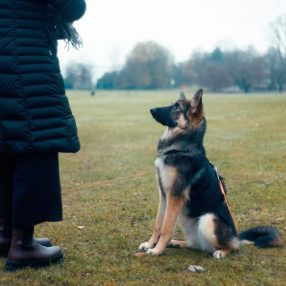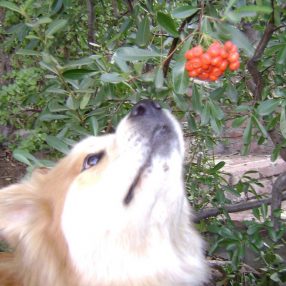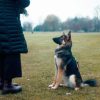
Welcoming a new puppy into your home is an exciting and heartwarming experience. The wagging tail, endless enthusiasm, and introductions to each family member contribute to the joy. However, the responsibility of proper training comes with the joy of having a puppy. Training your puppy isn’t just about teaching them basic commands; it’s about building a strong foundation for a lifetime of good behavior and companionship.
Puppy training is an investment of time and patience that pays off in a lifetime of companionship. It allows your puppy to learn new things while creating an easier life for you. Unfortunately, lack of training in the early stages can lead to you ending up with a disobedient, unruly and excitable dog.
The good news is you can prevent the most unruly behaviors and teach your dog how to behave in every situation with early training. Consistent training will allow the puppy to understand their owner’s expectations and prevent many behavior problems in the long term. This beginner’s guide to puppy training will cover the essential steps to get you started on the right paw.
Understanding the Basics of Puppy Training
Puppy training is about creating a positive environment for your furry friend to learn and thrive. Here are some fundamental aspects to keep in mind:
- Start Early: The earlier you begin training, the better. Puppies are most receptive to learning between 8 and 16 weeks of age. But don’t worry if you’ve adopted an older pup; dogs of all ages can learn new tricks.
- Positive Reinforcement: Positive reinforcement involves rewarding your puppy for good behavior. This can be a treat, praise, or even playtime. It encourages your pup to repeat the desired behavior.
- Patience is Key: Just like humans, puppies need time to understand and learn. Be patient and consistent in your training efforts. Avoid scolding or punishment, as it can lead to fear and aggression.
- Socialization: Exposing your puppy to various people, animals, and environments during their early months helps them become well-adjusted and confident adults.
- Consistency: Consistency in your commands and routines is crucial. Use the same cues for each command and ensure that everyone in your household follows the same training approach. It is also essential to be consistent with mealtimes. Being strict with mealtimes ensures your puppy knows they have to eat when you give them food and reduces the risk of them becoming picky eaters. If you’re considering introducing a raw dog food brand to your puppy, you may also want to do this during the early stages. This can help your puppy get familiar with the food and help you identify which protein sources they prefer through a protein rotation.
House Training
Accidents are part of raising a puppy, but practical house training can significantly minimize them.
- Establish a Routine: Puppies thrive on routine. Take your pup outside first thing in the morning, after meals, naps, and before bedtime. Consistency will help them understand when and where to go.
- Supervision: Keep a close eye on your pup, especially during the initial stages of training. If you can’t watch them, use a crate or a confined space to prevent accidents.
- Positive Reinforcement: Celebrate their success with treats and praise when your pup eliminates outside. This reinforces the idea that going outside is a good thing.
- Handling Accidents: Accidents will happen. If you catch your pup in the act, gently redirect them outside. Never scold or punish them for accidents, as this can create anxiety around potty training.
- Be Patient: Potty training takes time. Some puppies catch on quickly, while others may need more time. Stay patient and consistent; your puppy will get the hang of it.
The Importance of Socialization
Socialization is a critical aspect of puppy training. Exposing your pup to various people, animals, sights, and sounds helps them become confident and well-adjusted adults.
- Playdates: Arrange playdates with other puppies or friendly, vaccinated dogs. This helps your pup learn proper doggy manners and communication.
- People Skills: Introduce your pup to different types of people, including children, adults, and people wearing hats or uniforms. This reduces the likelihood of fear-based aggression later on.
- New Environments: Take your pup to parks, markets, and busy streets. Gradually expose them to various environments to build their confidence.
- Handling and Grooming: Get your pup used to being handled, touched, and groomed. This makes veterinary visits and grooming sessions less stressful for both of you.
- Positive Experiences: Ensure that every new experience is positive. Use treats, toys, and praise to create positive associations with new people, places, and things.
The Core Commands Every Puppy Should Learn
Teaching your puppy basic commands is essential for their safety and your sanity. Start with these core commands.
- Sit: Begin by teaching your pup to sit. Hold a treat close to their nose and move it upward, causing them to naturally lower into a sitting position. Once they sit, reward them with the treat and praise.
- Stay: Teaching your puppy to stay is a vital safety command. After they’ve mastered sitting, hold your palm out, say “stay,” and take a step back. Reward and return to them if they stay in place.
- Come: A reliable recall is crucial. Use a cheerful tone and say your pup’s name followed by “come.” When they come to you, reward them generously.
- Down: Teaching your puppy to lie down on command is helpful in various situations. Start with the sit position, then hold a treat to the ground and say “down.” Reward and praise when they lie down.
- Leave It: Puppies often explore the world with their mouths. Teaching them to leave harmful or unwanted items is essential. Hold a treat in your closed fist and say, “leave it.” Reward them with a different treat when they stop trying to get the treat.
- Heel: Walking politely on a leash is an art. Use treats to reward your puppy for walking beside you without pulling. If they start to pull, stop and wait for them to return to your side before moving forward.
Dealing with Challenges
Puppies explore the world with their mouths, which can lead to biting and chewing. Redirect their behavior with these strategies.
- Biting: Puppies often nip during play. Teach them to bite inhibition by yelping or saying “ouch” when they bite too hard. If they continue, walk away briefly, signaling that biting ends playtime.
- Chewing: Provide appropriate chew toys to satisfy their teething instincts. If they chew on something they shouldn’t, calmly replace it with a toy and praise them when they chew on the toy.
- Jumping: Discourage jumping by turning away and ignoring your pup when they jump up. Once they’re calm, reward and praise them.
- Digging: If your pup loves to dig, create a designated area in your yard filled with soft soil or sand. Praise them when they use it.
Excessive Barking: Address excessive barking by identifying the triggers and using commands like “quiet.” Reward them when they stop barking on command.










